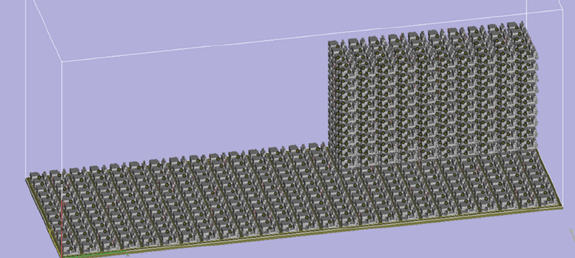Höganäs Digital Metal produces highly complex and intricate designs with 3D printing
November 20, 2013
Digital Metal AB, states Höganäs, offers a revolutionary and innovative manufacturing technique for metallic components. It is a proprietary technology for the Additive Manufacturing and 3D printing of metal components and systems and offers the unique capability to cost effectively produce highly complex and intricate designs and features for metallic parts.
Additive Manufacturing is the process of building components in layers directly from 3D CAD data, without the need of complex and costly tools and with minimal waste material. The technology is currently in the process of moving from a focus on the production of prototypes to the rapid manufacturing of series components.
Whilst most of the revenue derived from the technology to-date can be attributed to production of plastic parts, the production of metal parts by 3D printing is becoming more and more viable. The main methods for Additive Manufacturing of metal parts include laser or electron beam melting or precision ink-jet processing on a powder bed. The advantages of 3D technology are primarily;
- Free forming capability with few design limitations
- Fast time to market – only a 3D file is needed to create a prototype
- Low initial cost as there is no tooling
- Easy customisation – multiple 3D files can be handled simultaneously corresponding to multiple customer needs.
The graphs in Fig. 1 show schematically the cost benefit of Additive Manufacturing. The initial start-up cost for conventional production is, in general, high due to tooling or the setup of CNC machines, however the cost per component will be reduced with volume production. 3D printing only needs a CAD file to start production providing a low initial cost. Some cost improvements can be achieved with volumes due to improved post treatment steps. Another cost difference with Additive Manufacturing is that the process is, in general, not restricted by shape complexity, unlike conventional technologies. The more challenging the shape, the more advanced the tool has to be in order to make a part with conventional processes. This has a substantial impact on cost development.
The Digital Metal® process
Höganäs’ Digital Metal® system is based on precision ink-jet printing on a powder bed. Components are built up layer by layer from an original 3D or CAD file. The 3D file is prepared and sliced into 2D files corresponding to a 45 micron powder layer. A layer of 45 micron powder is applied in the build box and the printer passes over the surface and puts ink on relevant spots based on information from the 2D file.
This is repeated layer by layer until the component is formed in accordance with the original 3D file. Building time is currently in the region of one cm per hour, however it takes just as long to print the build box whether it contains one component or is full of components.
Finishing after printing includes the cleaning of components from powder residue and sintering to achieve the final size and strength. Surface roughness after sintering is normally Ra 6 but can easily be improved with traditional surface treatment processes to Ra 3 or better.
Benefits of Digital Metal® technology
Printing is done at room temperature with Digital Metal® technology without partial melting of the powder particles, which occurs with competing laser or electron beam technology. This provides high tolerances, a high level of surface finish and very high levels of detail.
The technology offers tolerances of 100 microns, with holes and wall thicknesses currently down to 200 microns.

Fig. 5 Schematic of the build box that shows the potential to build a large number of components in a single process
Cleaning of printed components is facilitated by the formation occurring at room temperature. Furthermore, there is in principal no need to build a support structure during printing because the components are supported by the powder bed in the build box. The whole volume of the build box can therefore be maximised and the components can be packed tightly because no account of thermal conductivity needs to be taken.
The process is flexible since forming and sintering is done in separate steps with different equipment, which means that the forming step can be maximized.

Fig. 6 Very high resolution is possible to obtain with Digital Metal® technology. Miniatures of the old salt glazed pottery Jars were produced for Höganäs’ annual meeting in 2013. Surface conditions are Ra 6 as sintered or Ra 1 as super finished

Fig. 7 Lightweight fasteners from 316L stainless
steel. The threads are printed without any
additional machining. The hollow interior structure
would be very challenging to produce with
conventional technology
Markets
Höganäs states that its Digital Metal® technology is most suitable at present for small components of complex shape for prototype or series production for various market segments including non-critical components in the aerospace and medical sectors.
Examples of different components manufactured by Digital Metal® technology are shown in Figs. 6 & 7.
Further information
Höganäs have a Digital Metal PDF brochure available to download from their website here
Useful links
To submit news and articles for publication on Metal Additive Manufacturing email us at [email protected]
Metal-AM homepage | Latest News | Articles | Subscribe to our free e-newsletter




















